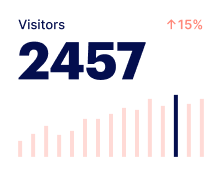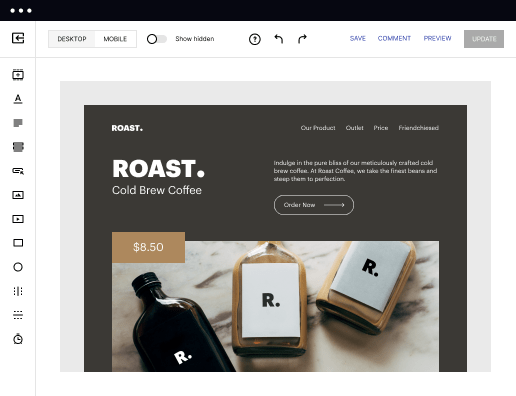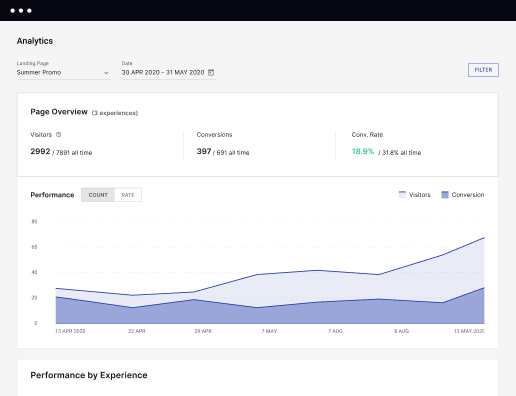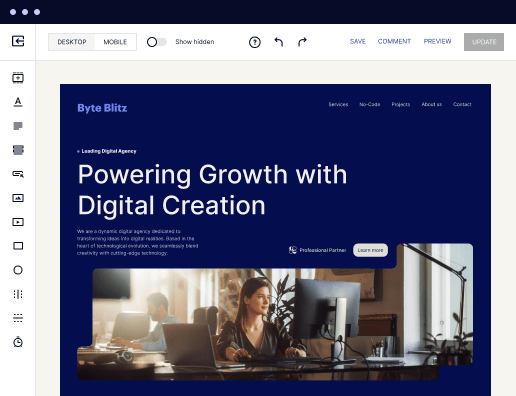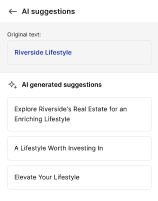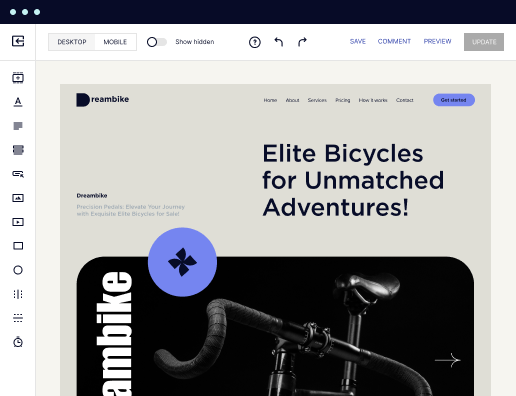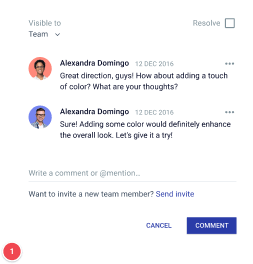Make your user-friendly database website
Empower your marketing team with Instapage's landing page creation, optimization, personalization, and collaboration features. Increase conversions, brand trust, and customer loyalty.
Create a user-friendly database website with Instapage's functionality page
Instapage's functionality page is a powerful tool for businesses looking to showcase specific features and capabilities. It enables marketers to reduce costs, grow conversions, and deliver relevant landing page experiences that increase brand trust, customer loyalty, and conversion rates.
Key Features of Instapage's Functionality Page
- Landing Pages: Build landing pages quickly with a library of conversion-focused layouts and Instablocks without any coding required.
- Optimization: Use built-in experimentation features, heatmaps, A/B testing, and analytics dashboard to optimize landing pages for higher conversions.
- Personalization: Dynamically deliver personalized content to unique audiences with dynamic text replacement, AdMaps, and audience-level data tracking.
- Collaboration: Speed up page production and review with collaboration features for instant feedback, real-time edits, and secure sharing with stakeholders.
How to Get Started with Instapage's Functionality Page
- Step 1: Get a free Instapage account and sign up for a free 14-day trial.
- Step 2: Configure your account and provide your company details.
- Step 3: Access your Dashboard, go to Landing Pages, and click Create Page.
- Step 4: Create a landing page from scratch.
- Step 5: Choose one of the ready-made templates.
- Step 6: Use design tools to craft your landing page: add page blocks, images, change fonts, and background colors, etc.
- Step 7: Save your changes and click Publish to launch your page.
- Step 8: Test, review, and experiment with your pages.
In conclusion, Instapage's functionality page offers a comprehensive solution for creating user-friendly database websites. Start your free trial today and experience the benefits firsthand!
Get more out of Make your user-friendly database website
Improve your Quality Score with quick load technology for landing pages
Increase conversions with content that aligns with your ads and audiences
Achieve maximum ROI by scaling your marketing initiatives
Leading the way in building high-performing landing pages





FAQs
See how to make your user-friendly database website in action
Ready to skyrocket conversions?
Supercharge your ad campaigns with high-performing landing pages.
Get started
